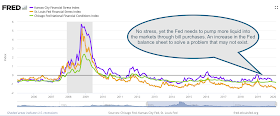Economics is a social science. It tries to explain the behavior of consumers and producers, and the interaction of buyers and sellers. It is not physics. Expectations are constantly being made based on changing sets of data and the reaction of different groups. There is herd mentality. At the extreme, there is the madness of crowds. There is rationality in beliefs, but also individual and group biases. It is a complex web or network of action and reaction.
Quantitative models try to simplify the complex through testable hypotheses based on models assuming rationality, but behavior may not follow the simplifying assumptions often employed. Consequently, the history and structure of markets adds important color and explanation for behavior.
The new book, Narrative Economics by Robert Shiller, tries to put the social back into the science of economics through a discussion of how the mood, feelings, and meme of narratives rise and fall through time. Narratives have a contagious flow like a disease. Narratives may start out slow, then build and finally exhaust and fall. With narrative comes changes in sentiment and behavior.
I appreciate the importance of narrative and how it may create fads and fashion which influence demand, but the challenge of economics as a science is to generate testable hypotheses provide predictions. This is the core view of the Friedman positive economics, Chicago School, approach. By a standard of attempting to provide meaningful predictions of phenomena not yet observed, the book fails.
The new book, Narrative Economics by Robert Shiller, tries to put the social back into the science of economics through a discussion of how the mood, feelings, and meme of narratives rise and fall through time. Narratives have a contagious flow like a disease. Narratives may start out slow, then build and finally exhaust and fall. With narrative comes changes in sentiment and behavior.
I appreciate the importance of narrative and how it may create fads and fashion which influence demand, but the challenge of economics as a science is to generate testable hypotheses provide predictions. This is the core view of the Friedman positive economics, Chicago School, approach. By a standard of attempting to provide meaningful predictions of phenomena not yet observed, the book fails.
The ebb and flow of narrative is interesting, but Shiller does not provide any testable hypotheses on why these narrative themes will begin or end. He discusses the Kermack-McKendrick model of disease epidemics which is an interesting approach for thinking about narrative growth, but this does not help us with why some ideas stick. Shiller uses the frequency of words as measured by Google Ngrams to show the trends of narrative, but this is only descriptive not predictive.
Narratives come and go, but this work provides no link between stories and market behavior that is measurable. Why do some ideas move through markets and not others? His work does not account for the interesting advances in networking. It could be an issue of who starts the idea and the social network that exists with these idea generators. There are ways to advance this thinking, but not discussed in Shiller's book.
Investors should be aware of narratives, themes, and sentiment, but awareness has to be at some point converted to something measurable. The use of word frequency has been applied to finance to measure the distribution of memes. When some narrative gets more frequency or play, there is a potential for increased demand. Still, the quality and importance of this link is mixed.
Providing stories of narrative themes can tell us about time and place, but it tells us nothing on whether a given narrative will have an impact on prices or behavior. This could just be another way of adding history to economics. I can agree with the idea that more history and understanding of beliefs and sentiments should be explored, but there is a large chasm between descriptions and predictions.
Narratives come and go, but this work provides no link between stories and market behavior that is measurable. Why do some ideas move through markets and not others? His work does not account for the interesting advances in networking. It could be an issue of who starts the idea and the social network that exists with these idea generators. There are ways to advance this thinking, but not discussed in Shiller's book.
Investors should be aware of narratives, themes, and sentiment, but awareness has to be at some point converted to something measurable. The use of word frequency has been applied to finance to measure the distribution of memes. When some narrative gets more frequency or play, there is a potential for increased demand. Still, the quality and importance of this link is mixed.
Providing stories of narrative themes can tell us about time and place, but it tells us nothing on whether a given narrative will have an impact on prices or behavior. This could just be another way of adding history to economics. I can agree with the idea that more history and understanding of beliefs and sentiments should be explored, but there is a large chasm between descriptions and predictions.































